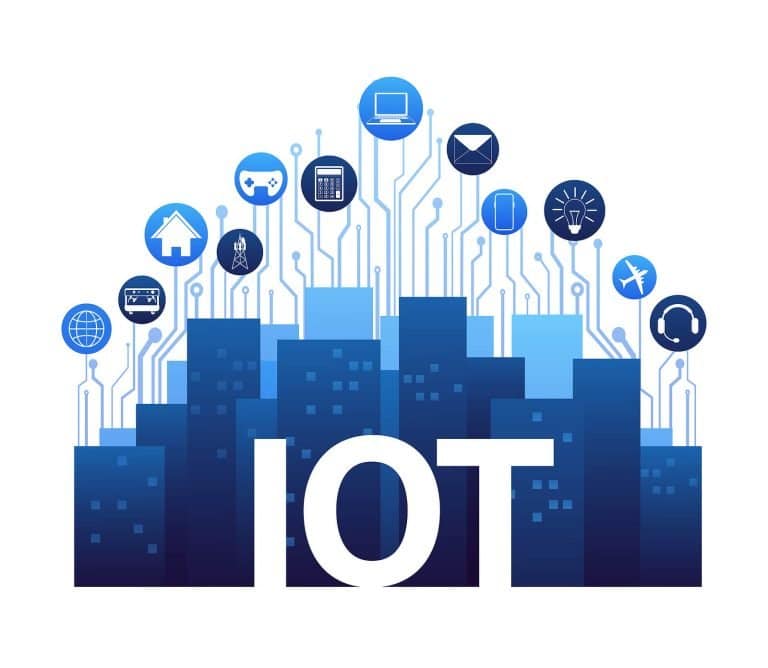If you’re actively considering an Internet of Things (IoT) initiative or are already engaged in one, chances are you’ve already taken into account its goals, strategy, and desired outcome. What you may not have given thought to is whether it has an IoT architecture. And if it does have an architecture, is that design specific to your project, or simply a customized version of a more general IoT framework.
Table of Contents
ToggleWhat Is IoT Architecture?
An IoT Architecture is a system of numerous elements such as sensors, actuators, protocols, cloud services, and layers that make up an IoT networking system. It generally consists of differentiated layers that enable administrators to evaluate, monitor, and maintain the system’s consistency. As with any system design plan, it also requires a strategy for integration with your organization’s existing infrastructure and systems.
Organizations with an IoT architecture are significantly more successful than those without — some estimates put it at a 34% greater chance of driving new revenue or improving business processes via IoT, for companies with an architectural plan. And successful organizations are more likely to stick with an architecture that includes both a general-purpose IoT framework and a customized version that’s specific to their IoT project.
IoT Architecture Components
Conceptually, an IoT architecture consists of four components: applications and analytics, integration, security, and infrastructure
The applications and analytics component processes and displays the information collected via IoT. It includes data analytics tools, artificial intelligence (AI) and machine learning (ML), and visualization capabilities.
The integration component makes sure that all the applications, tools, security, and infrastructure of the IoT project integrate smoothly with existing ERP (Enterprise Resource Planning) and other management systems across the organization.
The security component governs physical and cybersecurity for all system components via firmware and embedded security providers.
The infrastructure component includes the physical devices which capture information (IoT sensors), and IoT actuators, which control the environment. It includes a physical network (such as Wi-Fi, 4G, or 5G) on which the sensors or actuators actually reside. The infrastructure also has a transportation element responsible for transmitting data from each IoT location to the platform where it is processed and analyzed. As the actuator and sensor infrastructure are often different, the IoT infrastructure component additionally requires a management layer, with dedicated agents and applications.
IoT Architecture Layers
There’s no single consensus on IoT architecture, with different architectures having been proposed by different researchers. Three, four, and five-layer architectures are the dominant forms.
Three-Layer IoT Architecture
A three-layer architecture is the most basic form for IoT deployment, consisting of perception, network, and application layers.
The perception layer is the physical layer, with sensors for detecting and gathering information about the environment. This layer senses some physical parameters of the surroundings or identifies other smart objects in the environment.
The network layer is responsible for connecting IoT elements to other smart things, network devices, and servers. The transmission and processing of sensor data also takes place on this layer.

The application layer is responsible for delivering application-specific services to the user. Its design parameters govern the various applications (smart home, health care, industrial IoT, etc.) in which the Internet of Things can be deployed.
Four-Layer Architecture
This model takes a slightly different ordering to the three-layer concept, with an application layer, a data processing layer, a network layer, and a perception or sensor layer.
In four-layer IoT architecture, the application layer defines all applications in which IoT is being deployed and provides the interface between the end IoT devices and the network. This layer authorizes the provision of services to the various applications, based on the information collected by sensors.
The data processing layer receives information obtained from a perception layer and is responsible for confirming that data is forwarded on from authentic users and protected from threats.
The network layer is also known as the transmission layer. It acts as a bridge, carrying and transmitting data gathered from physical objects via sensors, and connects the network devices and networks to each other.
The perception layer or sensor layer is responsible for recognizing IoT devices and gathering data from them. Sensors on a network may be of various types, and the perception layer must be able to differentiate between them and accommodate their different working methods.
Five-Layer IoT Architecture
In addition to the perception, network, and application layers of three-layer architecture, a five-layer IoT architecture includes the processing and business layers. The perception and application layers’ role in this model is the same as the architecture with three layers.
The transport layer transfers IoT sensor data to and from the perception layer and the processing layer. Networks such as wireless, 3G, LAN (Local Area Network), Bluetooth, RFID (Radio Frequency ID), and NFC (Near-Field Communications) are employed for these purposes.

The processing layer is also known as the middleware layer and is responsible for storing, analyzing, and processing the huge amounts of data that come from the transport layer. Using technologies such as databases, cloud computing, and big data processing modules, it can manage and provide a diverse set of services to the lower layers.
The business layer manages the entire IoT system, including its applications, business and profit models, and user privacy.
Types of IoT Network
Connectivity is one of the key elements in IoT networking, as no project can succeed without a reliable connection between devices, sensors, and your IoT platform. There are four general types of IoT network, commonly in deployment.
1. Cellular Networks
Cellular networks use the same mobile networks as smartphones to enable communication for IoT devices. Although this type of network covers a very large area, cellular connectivity is often not available in places where IoT sensors are routinely deployed, such as inside utility closets or in the depths of a mine shaft. In addition, cellular-connected IoT devices require a lot more power and energy than some other types of wireless networks.
The LTE-M and Narrowband IoT (NB-IoT) cellular wireless IoT protocols are gaining in popularity, with NB-IoT using less battery power and costing less than LTE-M, but currently trailing in terms of coverage area.
2. Local and Personal Area Networks (LAN / PAN)
Personal area networks (PAN) and local area networks (LAN) cover fairly short distances and offer a cost-effective solution, but can be unreliable in terms of data transfer. Wi-Fi and Bluetooth are two of the principal technologies used for IoT connectivity in networks of this type.
Wi-Fi can be used for applications that run in a local environment close to an access point, or in a distributed setting with multiple access points integrated into a larger network.
Bluetooth Low Energy (BLE) is a more energy-efficient wireless network protocol, but has slower transmission rates and is more limited in the amount of data that it’s capable of transmitting.
3. Low Power Wide Area Networks (LPWAN)
Developed in response to cellular connectivity’s early challenges, LPWAN provides a longer range than Wi-Fi and Bluetooth but uses less power than cellular. LoRaWAN (long-range wireless area network) is a commonly used IoT network protocol in this category, with low power requirements and relatively low-cost chipsets.
4. Mesh Networks
All the sensor nodes in a mesh network cooperate to distribute data amongst each other in order to reach the gateway. These networks are very short range and may require additional sensors throughout a building, or the use of repeaters to expand coverage. IoT applications that require instant messaging (such as smart lighting) can result in high power consumption. However, mesh networks are robust and easy to install, making them a popular choice for IoT deployment inside buildings.
Summary:
IoT Architecture
What Is IoT Architecture? An IoT Architecture is a system of numerous elements such as sensors, actuators, protocols, cloud services, and layers that make up an IoT networking system. Organizations with an IoT architecture are significantly more successful than those without — some estimates put it at a 34% greater chance of driving new revenue or improving business processes via IoT, for companies with an architectural plan. Conceptually, an IoT architecture consists of four components: applications and analytics, integration, security, and infrastructure. There’s no single consensus on IoT architecture, with different architectures having been proposed by different researchers. Three, four, and five-layer architectures are the dominant forms.
FAQ
A: The purpose of IoT network architecture is to provide a structured framework for connecting and managing IoT devices, enabling seamless communication, data transfer, and control within the IoT ecosystem.
A: IoT network architecture facilitates data transfer by defining the connectivity protocols, gateways, and cloud platforms that enable efficient and secure transmission of data between IoT devices and the cloud for storage, processing, and analysis.
A: Gateways in IoT network architecture act as intermediaries between IoT devices and the cloud. They perform functions such as data aggregation, protocol translation, security enforcement, and device management.
A: Cloud computing is an integral part of IoT network architecture as it provides the infrastructure and services for storing, processing, and analyzing the vast amounts of data generated by IoT devices. It also facilitates the development and deployment of IoT applications.
A: A mesh topology in IoT network architecture offers benefits such as improved network resilience, self-healing capabilities, and multiple data transmission paths. It enables devices to communicate directly with one another, enhancing reliability and expanding network coverage.






